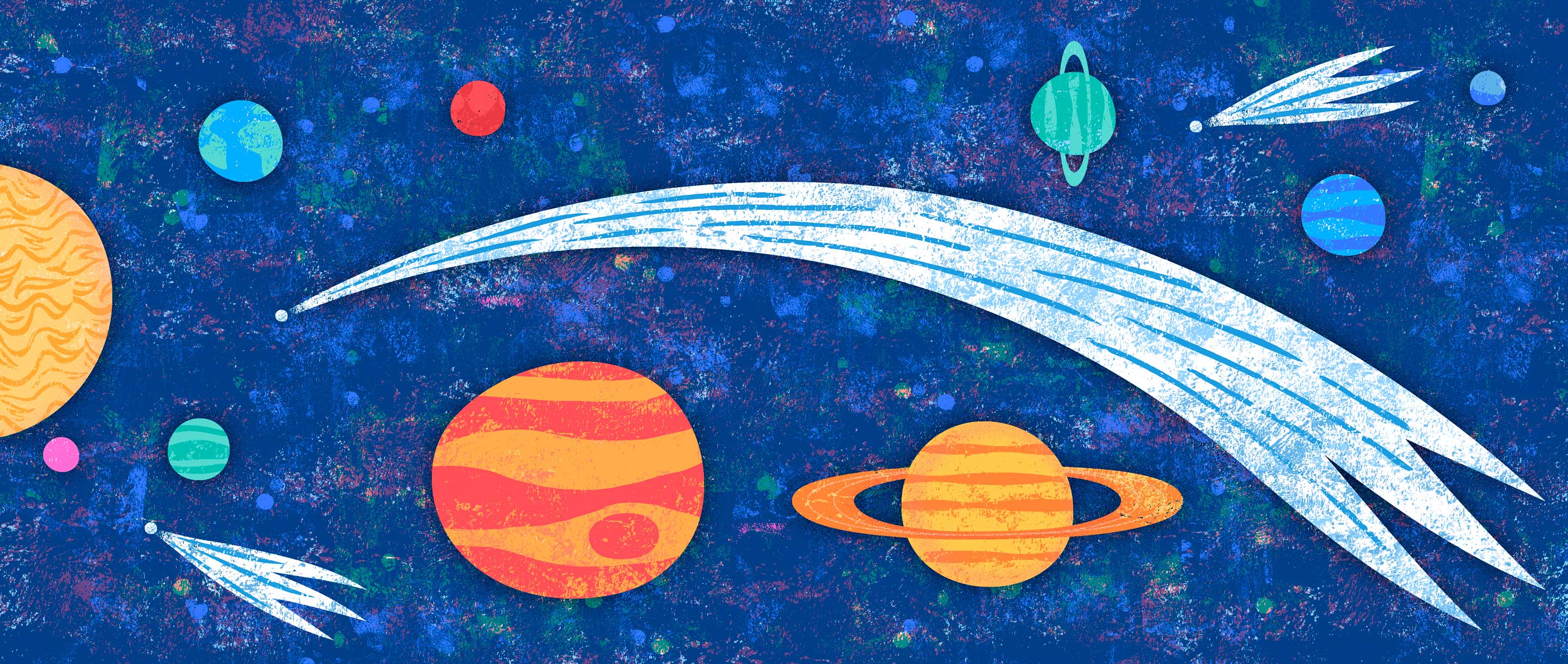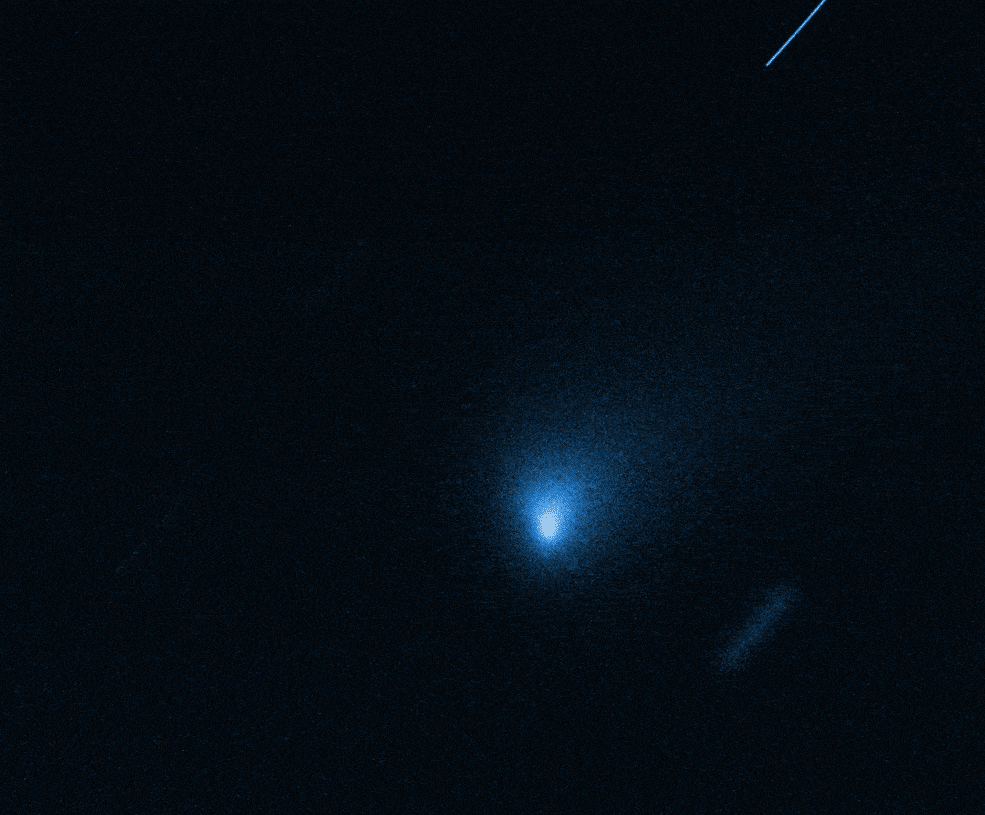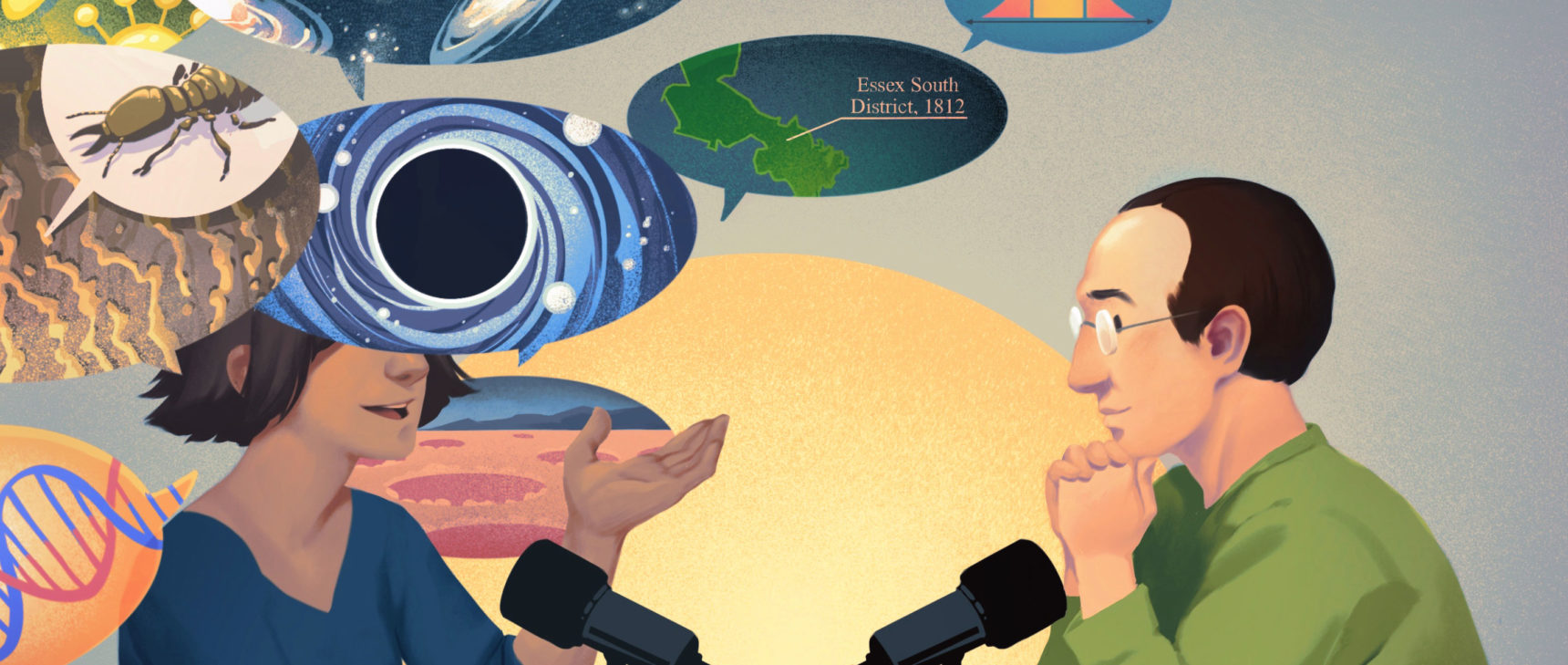The Age of Interstellar Visitors

James O’Brien for Quanta Magazine
Introduction
It sounds almost like science fiction: a tiny world that formed around another star, visiting our cosmic neighborhood for us to study. And yet that’s exactly what has happened, twice now as of the last few months. It will only happen more often this decade.
The first known interstellar object — meaning it formed outside of our solar system — dropped by in late 2017. Named 1I/ʻOumuamua, scientists weren’t sure what to make of it at first. They didn’t have much time with the object, only two weeks of detailed observations as it raced away from Earth, before it became too faint. These scraps of data form our understanding of ʻOumuamua. It was a skyscraper-size, tumbling little world, fairly elongated and smaller than most asteroids or comets that we regularly observe. It also had a reddish exterior — the sort found on surfaces far out in the solar system, where an unyielding rain of starlight interacts with carbon-rich molecules to give them a ruddy hue.
In contrast, the second interstellar traveler we’ve observed, 2I/Borisov, is an obvious comet, a lot like the ones that formed in the icy extremes of our own system. When comets come close to the sun, they blossom: Heavy with ices, kept chilled from the earliest times of our solar system’s planet-forming disk, they grow stately tails of gas and dust under our star’s gentle heat. Imprinted in the light of these wisps of subliming vapor are the fingerprints of a comet’s chemical composition. Some of the frozen molecules and ions in comets are familiar ones, like ammonia and water, and we infer their presence by detecting their offspring, split off by sunlight: ammonia’s daughter, NH2, and water’s daughter, hydroxyl (OH). 2I/Borisov shares this chemistry, we learned as it approached the sun last month, and it’s also kin to our comets in terms of size — a little under a kilometer — and its rates of slow dissolution.

The Hubble Space Telescope captured interstellar object 2I/Borisov as it raced through the solar system, only the second known cosmic visitor to do so.
NASA, ESA and D. Jewitt (UCLA)
These interstellar ambassadors are exciting to researchers because the frozen samples in a comet tell the story of the varied chemistry of its home. Now, with 2I/Borisov, we finally have a chance to learn directly about the neighborhood surrounding another star. Already we can surmise that the processes that form a comet within the solar system take place outside of it as well. And while ʻOumuamua was seen too late to be studied in great detail, Gennadiy Vladimirovich Borisov discovered his namesake comet much earlier in its one-way trip through the solar system, allowing for months of study.
Even so, both objects have been relatively faint, which has made their observation and characterization challenging. In fact, we’ve likely had many such visitors in the past but can only now spot them thanks to technological advances. The telescopes that track the skies to hunt near-Earth asteroids and other varied populations within the solar system are also skilled at finding interstellar objects. Wide-angle cameras continually photograph broad swaths of the skies, and software evaluates the faint dots of light for any that wander, highlighting newcomers. Our sky surveys are always improving, and even deeper searches are coming. The Rubin Observatory’s upcoming Legacy Survey of Space and Time (LSST) will make a movie of the whole southern sky every three nights, over a decade. Expectations run high, and astronomers think this survey will sift out visiting interstellar worlds at least once per year.
That high rate of discovery comes from the fact that we live in a galaxy teeming with wandering tiny worlds. Every star sheds most of the asteroids and comets it produces, in many different ways — gravitational nudges from its migrating planets, say, or a dying star’s weakening hold on its far-circling comets. Our galaxy is thus not just a place of stars, but of truly incredible numbers of interstellar asteroids and comets, many trillions donated from every star. They number a staggering 1026 or so in the galaxy as a whole. While these travelers remain only a minute fraction of the galaxy’s mass, we have yet to understand their role in the processes of planet formation. Researchers are studying how these fugitive worlds could become trapped in the birthplaces of stars and in the new-forming disks of planetary systems. Just as supernovas — stellar explosions — can provide material to enrich the birthplaces of new stars, the life cycles of planetary systems may also seed new planets, in a cycle extending through the galaxy’s long history.
And why stop there? Galaxies themselves form from the merger and complex braiding of many parent galaxies once separated by vast distances. This process is a key part of how galaxies evolve, but the smallest pieces are seldom considered. Nobody knows how planetary systems may form in a completely different galaxy, but a future interstellar object may tell us — by bringing an island-size piece of one right to our doorstep.
With this upcoming data, we are on the brink of finally putting together a coherent theory for how planetary systems form, grow and change. Until now, physicists have studied each part of a system’s life span independently, stringing together bite-size boxes of physics spanning over a billion years and 36 orders of magnitude in mass. Direct samples of systems beyond our own offer a chance to open up this picture with “ground truth.” After all, it’s hard to know what we’re not imagining. The scarce data we gleaned on ʻOumuamua left a flotilla of theories for its origin in its wake. Mere months later, the New Horizons spacecraft showed that a primordial world sitting in our Kuiper belt, Arrokoth, has a strange shape that went entirely unpredicted by formation theory: two pancakes gently docked together in a contact binary. If our own solar system can hide such wonders, what will the next interstellar wanderer reveal?
To me, the arrival of these planetary pieces formed at another star tells us that we are in the heart of a revolution — a change in viewpoints, begun hundreds of years ago, that continues to shift our perspective on our own home, our own planetary system. The orbit of Pluto showed that the solar system has a different shape today than when it formed, and exoplanetary systems show a wild variety of shapes and sizes, few anything like our own. And yet now, we’ve learned that the chemistry of our own comets holds no unique flavor. The commonality of the cosmos extends from what happens here to what happens at a star that could be anywhere else in our galaxy, or even beyond: We are truly part of a larger picture.
This article was reprinted on Wired.com.



